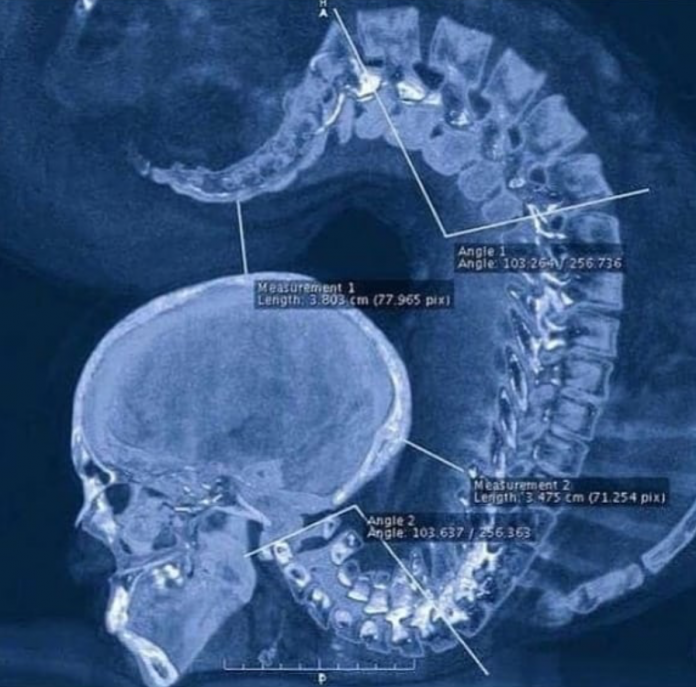What you’re looking at is an x-ray of an individual-a contortionist in an extreme pose of spinal extension! Note how the thoracic spine stayed almost completely straight.
The spine forms the central axis of the skeleton, supports the skull, and gives attachment to the thoracic cage, pectoral girdle, and upper limb. It combines strength with great flexibility as it has many joints close together.
Movements of the spine are possible due to intervertebral discs, and with the fulcrum of movement occurring primarily around the nucleus pulposus. Specialized motion occurs at the atlanto-occipital and atlantoaxial joints, which do not contain a disc.
Flexion and extension are common to all parts of the spine; a significant degree of flexion/extension can be achieved at the atlanto-occipital joint, cervical and lumbar spine, but is restricted in the thoracic spine. Lateral flexion is free at the atlanto-occipital joint, cervical and lumbar spine, but less free in the thoracic spine. Rotation is greatest at the specialized atlantoaxial articulations, and to a lesser degree in the cervical and lumbar spine.
A medical publication from 2008 suggests that long-term damage to the spine is common in long-term contortion practitioners. A study of five practitioners using magnetic resonance imaging (MRI) by Peoples et al. documented limbus vertebrae, intervertebral disc bulges, and disc degeneration. Three of the five practitioners also reported back pain.
Source: @medicalpedia




